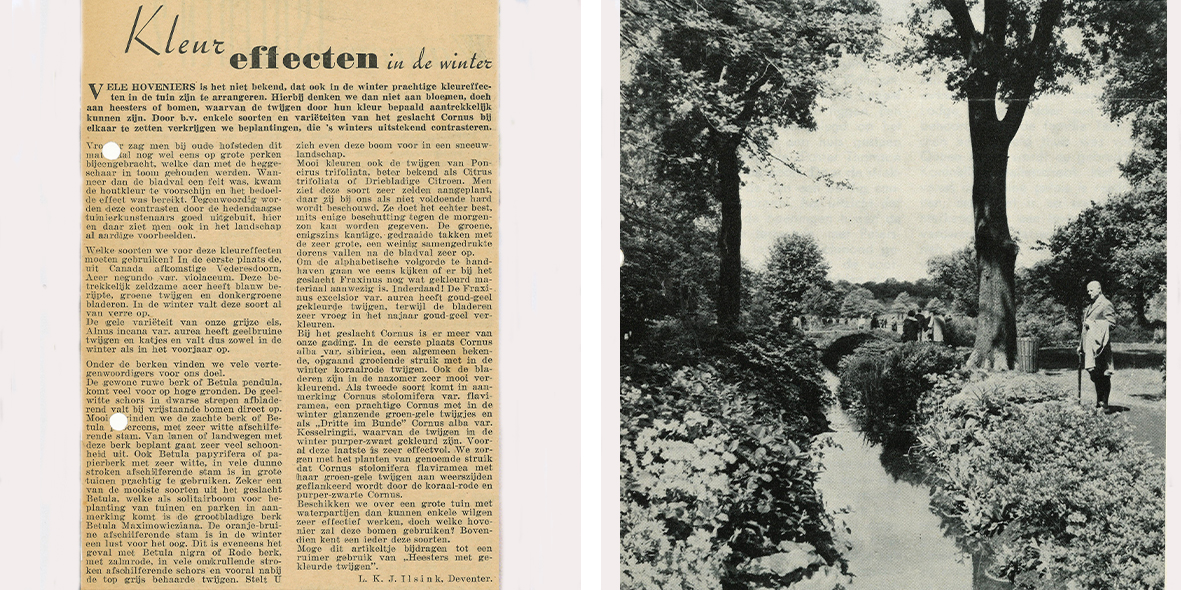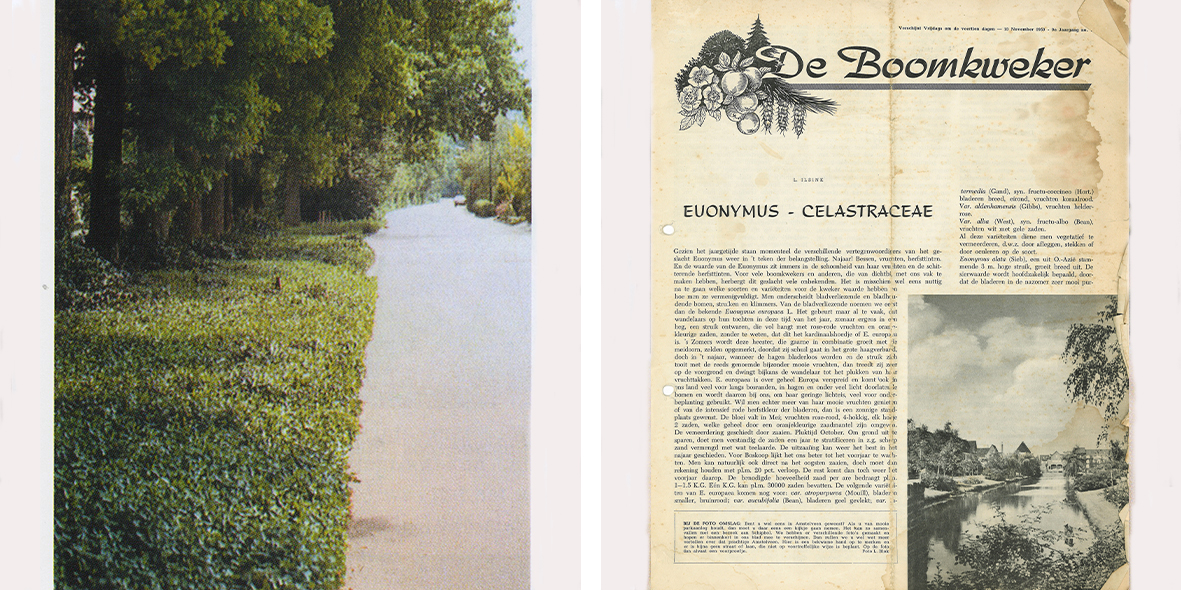1950s and 60s – Plant breeding leads to ‘Dart’ varieties
Developing new plant species and varieties was a fondness of Louis Ilsink. He was a dendrologist and collected, introduced and also developed many plants in his lifetime. Finding disease-resistant plants has always been the common thread in breeding. There are now more than 300 new plant introductions in Ilsink’s name, and this development continues.
During his sowing and staking experiments, he discovered that some cultivated plants that were propagated by cuttings or grafts in the traditional, professional way also came back true to type from seed. This apomixia (reproduction without fertilisation) was unknown in the profession and proved to be an important discovery.
Application of this method of propagation meant a considerable simplification and acceleration of the overall propagation process, compared with the vegetative methods used up to then. Together with a Czech professor living in the United States, who had read an article by Ilsink on this method, the method was then developed further.

Process new plant introductions
Louis Ilsink tested his new creations for about three years, focusing on aspects such as winter hardiness and growth rate. After this period, he introduced them to the market. When a young population obtained through sowing was ready for commercialization, it was presented to key customers. Their opinions were gathered, and if the plant was deemed suitable, it was introduced into trade. As a result, more than 300 new plant introductions bear the Ilsink name, and this development continues to this day. The introductions by Louis Ilsink can be recognized by the prefix ‘Dart’.
Staying ahead of the competition
At the time, cultivated products could not be legally protected under plant breeders’ rights. This meant that anyone could grow them. To stay ahead of the competition, new varieties had to be introduced quickly, as competitors would catch up in about two or three years. Innovation was already crucial in horticulture back then. By continuously developing new varieties, Ilsink and Groenewegen ensured they stayed ahead of their competitors.
Fortunately, Ilsink’s love for plants was so profound that breeding never bored him for a moment. He was a highly creative person who saw opportunities in everyday things and during his travels. On one occasion, while visiting a cemetery in England, he spotted a beautiful little blackberry bush he had never seen before. The bush was partially growing over the grave of a certain Mr. Thompson. He took a cutting from the plant and named it Rubus fruticosus agg. ‘Sir William Thompson’.

Euonymus fortunei Dart’s Blanket
The Euonymus fortunei Dart’s Blanket is a cultivated variety that remains a staple in the assortment of green screens to this day. The beginning of this development took place in Zuiderpark, The Hague. Louis Ilsink, whose nature as a tree nursery expert was to always remain open to and seek out potential innovations in his field, discovered a ground-covering specimen of Euonymus coloratus among the shrubs. Normally, this shrub grows upright, which immediately piqued Louis’ curiosity. This unique plant was then propagated using vegetative reproduction methods and became a top product of the nursery under the name Euonymus fortunei ‘Dart’s Blanket’. One of the major strengths of this shrub is its high tolerance to salt. As a result, it was frequently planted in central reservations, as road salt in winter did not affect it.


